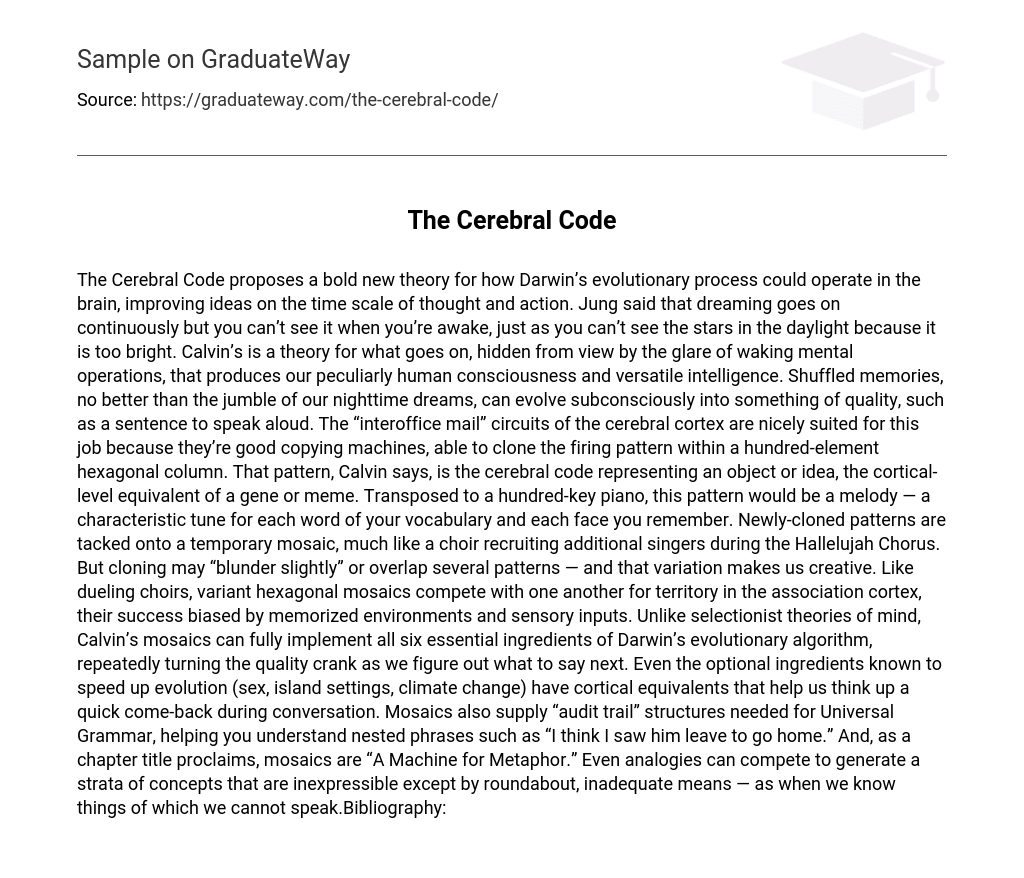The Cerebral Code presents a daring theory on how Darwin’s process of evolution could function in the brain, enhancing concepts concerning the timeframe of thought and action.
According to Jung, dreaming is a continuous process that is not visible during wakefulness, similar to how stars are not visible during daylight due to the brightness. Calvin’s theory suggests that there is a hidden aspect of our consciousness and intelligence that is concealed by the dominance of mental operations while awake. Memories, similar to the disarray of our dreams, can transform subconsciously into something valuable, like a spoken sentence. The cerebral cortex’s “interoffice mail” circuits are well-suited for this task because they can accurately replicate the firing pattern within a hexagonal column of a hundred elements. This firing pattern, as Calvin explains, serves as the cerebral code for representing an object or idea, comparable to a gene or meme at the cortical level.
If the pattern in question were converted to a hundred-key piano, it would become a melody. This melody represents the distinct tune associated with every word in your vocabulary and every face you remember. When new patterns are created, they are added to a temporary mosaic, similar to a choir adding new singers during the Hallelujah Chorus. However, during this process of cloning, errors or overlaps can occur, resulting in slight variations. It is these variations that give rise to our creativity. Like competing choirs, these variant hexagonal mosaics compete for dominance in the association cortex, with their success influenced by our memorized environments and sensory inputs. Unlike selectionist theories of mind, Calvin’s mosaics can fully incorporate all six crucial components of Darwin’s evolutionary algorithm. This allows us to continuously improve and refine our thoughts and ideas.
The text highlights the role of optional ingredients like sex, island settings, and climate change in speeding up evolution. These ingredients have cortical equivalents that facilitate quick thinking during conversations. Mosaics also provide structures necessary for Universal Grammar, aiding in the comprehension of nested phrases. They serve as an “audit trail” for understanding phrases like “I think I saw him leave to go home.” Additionally, mosaics are described as “A Machine for Metaphor” in a chapter title. Analogies can also generate a layer of concepts that are difficult to express directly, resulting in roundabout and inadequate means of communication.
Bibliography:





